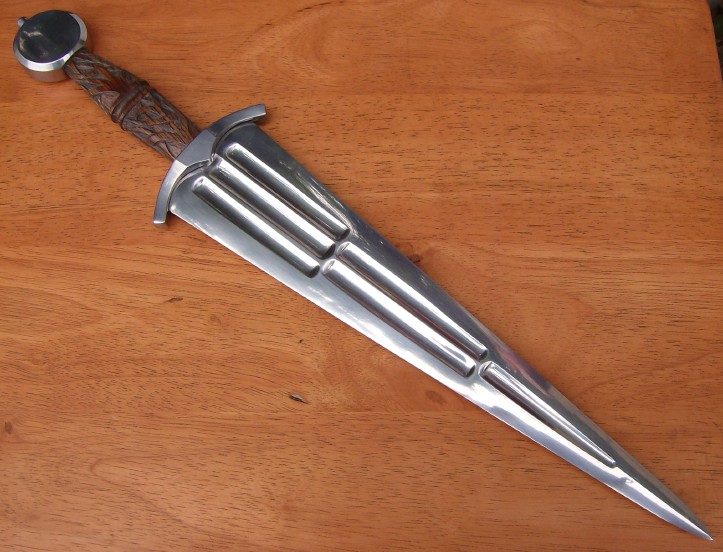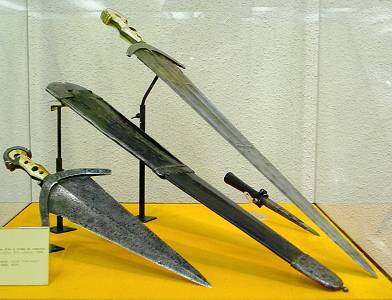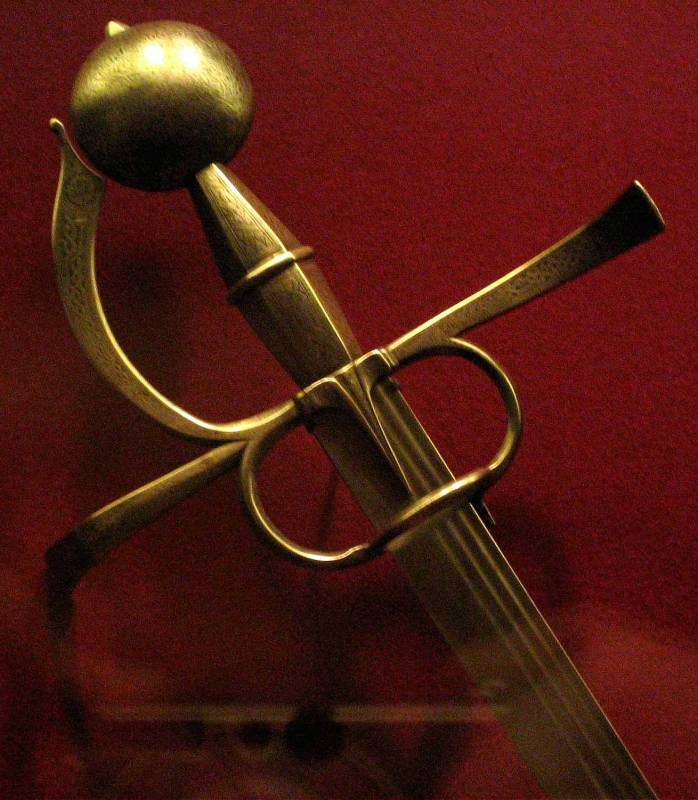The specs are remarkably similar to some of my Bowie Knives in many ways. The blade is 13 3/4" (35cm) long with the COG at the base of the blade which is 2 7/8" (530mm) wide. The hilt is 6 5/8" (16.83cm) long. The total weight is 1.5 pounds (.68 kg). Given these specs, my guess is that the cinquedea was used rather like the much later Bowie Knife. It appears that it would be a very good cut and thrust weapon and it would appear that it would deliver a wicked back cut in proper hands.
My reading of history shows that they were carried by the young bravos during the Italian Renaissance (think Romeo, Mercutio, Tybalt, and friends from Shakespeare's play, "Romeo and Juliet") in a small of the back scabbard and were used in the street brawls that regularly broke out between rival families. I will be reporting further on it when I have received it and have had a chance to play with it a bit.


